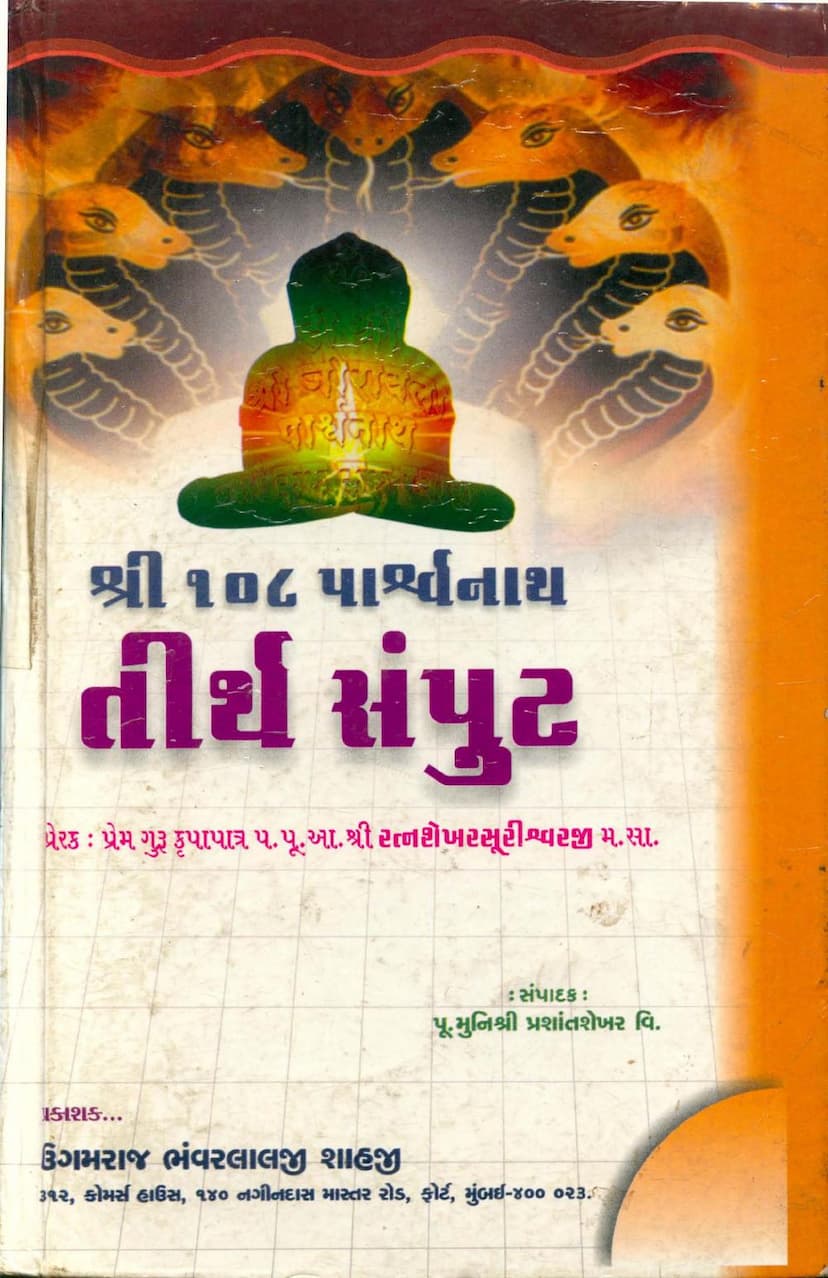108 Parshwanath Tirth Samput Part 02
Added to library: September 1, 2025

Summary
Here's a comprehensive summary of the Jain text "108 Parshwanath Tirth Samput Part 02":
Title: 108 Parshwanath Tirth Samput Part 02 Author: Prashantshekharvijay Publisher: Ugamraj Bhanvarlal Shahji
Overall Purpose: This book is a collection dedicated to the worship and veneration of Bhagwan Parshwanath, one of the most revered Tirthankaras in Jainism. It focuses on the 108 sacred pilgrimage sites (Tirths) associated with Lord Parshwanath, presenting a detailed exploration of each significant temple and its historical and spiritual importance. The book aims to serve as a guide and devotional resource for Jains and anyone interested in the pilgrimage traditions of Jainism, particularly those related to Lord Parshwanath.
Key Themes and Content:
-
Devotion to Lord Parshwanath: The entire book is a testament to the profound devotion towards Lord Parshwanath, who is celebrated for his powerful divine presence and the relief he provides from suffering. The text emphasizes that merely remembering Lord Parshwanath can alleviate pain and bring solace.
-
The Significance of 108 Tirths: A central theme is the concept of 108 specific pilgrimage sites dedicated to Lord Parshwanath. The book meticulously details each of these sites, highlighting their unique characteristics, the deities enshrined there, and their historical lineage. The sheer number of 108 sites underscores the immense influence and widespread veneration of Lord Parshwanath across India.
-
Historical and Architectural Details of Tirths: For each of the 108 Tirths, the book provides:
- Location: Geographical details, including the state, district, and specific village or town.
- Temple Description: Information about the architectural style of the Jinayalas (temples), the material of the idols (e.g., white marble, black stone), the posture of the idol (Padmasana), and the specific adornments like the serpent hoods (Saptaphana).
- Historical Background: Details about the founding of the temples, renovations, significant historical events, and the specific lineages or patrons involved in their creation and upkeep.
- Miraculous Events and Legends: Many Tirths are associated with miraculous occurrences and stories that have solidified their importance and attracted devotees over centuries. These anecdotes often highlight the divine power and grace of Lord Parshwanath.
- Contact Information: For practical purposes, contact details for the respective temple trusts or management are often provided, allowing potential pilgrims to plan their visits.
-
The "108 Parshwanath Bhakti Vihar" at Shankheshwar: A significant portion of the book focuses on the Shri 108 Parshwanath Bhakti Vihar, a special complex located at the renowned Shankheshwar Mahatirtha. This unique structure is designed to house representations of all 108 Tirths dedicated to Lord Parshwanath. It serves as a central point for devotees to experience the spiritual essence of all these sacred sites in one location. The book details the grandeur and artistic craftsmanship of this "Bhakti Vihar."
-
Spiritual Practice and Mantra Chanting: The book often includes mantras associated with specific forms of Lord Parshwanath found at these Tirths. These mantras are presented as powerful tools for spiritual practice, seeking blessings, overcoming obstacles, and achieving desired outcomes, emphasizing the devotional aspect of the pilgrimage.
-
Illustrative Stories (Mahima Aparampaar): The book includes numerous inspiring stories of devotees whose lives were positively impacted by their devotion and visits to these Tirths. These narratives serve to reinforce the spiritual significance and miraculous powers attributed to Lord Parshwanath and his manifestations.
-
Dedication and Sponsorship: The publication itself is dedicated to revered Jain spiritual leaders and supported by prominent Jain families, indicating the importance and communal effort behind such religious literature. The Shah family of Mumbai, specifically Ugamraj Bhanvarlal Shahji, played a crucial role in its publication.
-
Structure and Organization: The book is organized systematically, likely dedicating sections or chapters to individual Tirths or groups of Tirths. The "Anukram" (index) on page 22 suggests a structured presentation of the 108 Tirths.
In essence, "108 Parshwanath Tirth Samput Part 02" is a comprehensive devotional and informative compendium that guides readers through the sacred geography of Jain pilgrimage sites dedicated to Lord Parshwanath. It combines historical accounts, architectural descriptions, spiritual teachings, and inspiring anecdotes to foster devotion and encourage spiritual journeys.